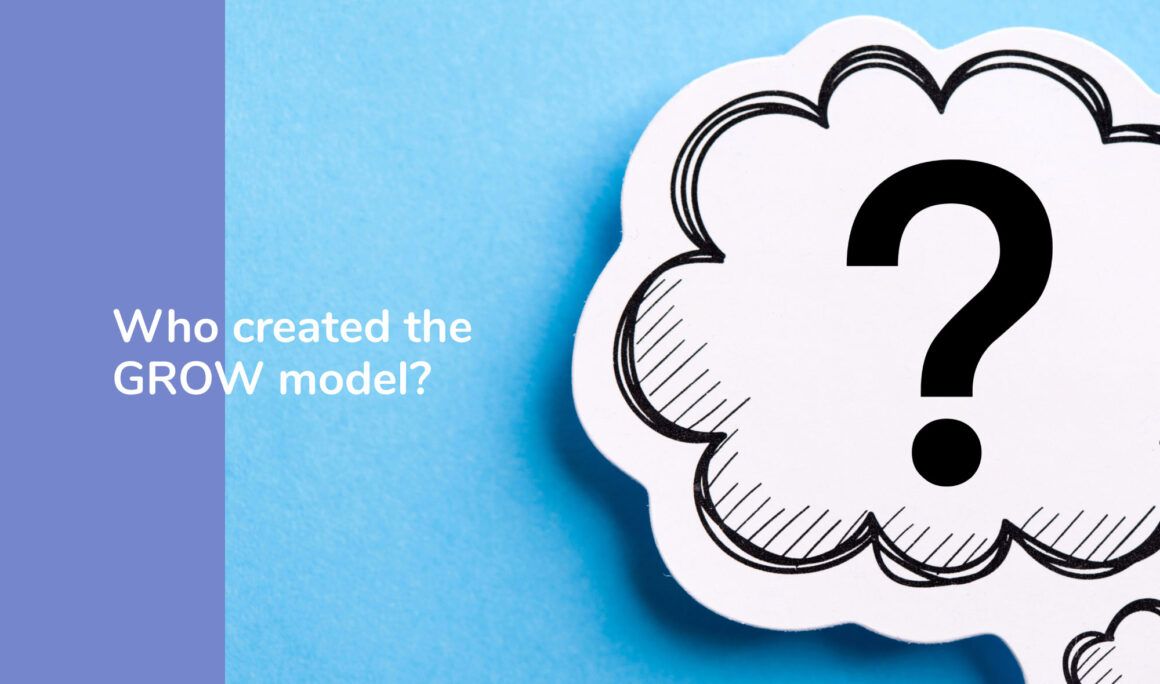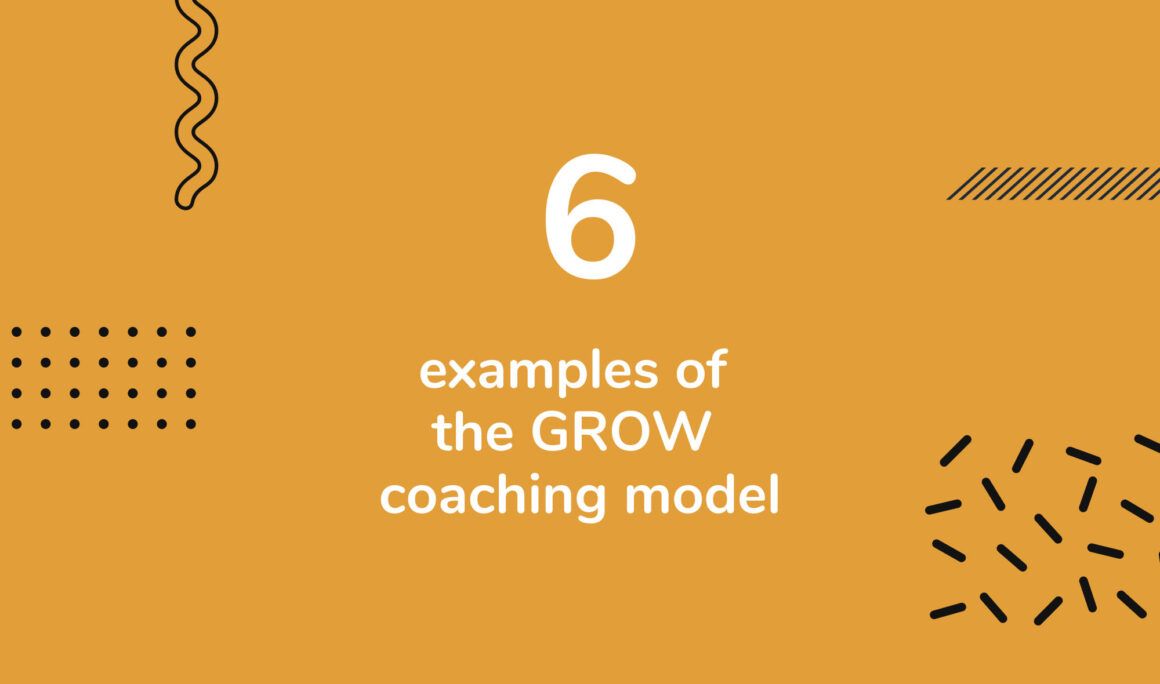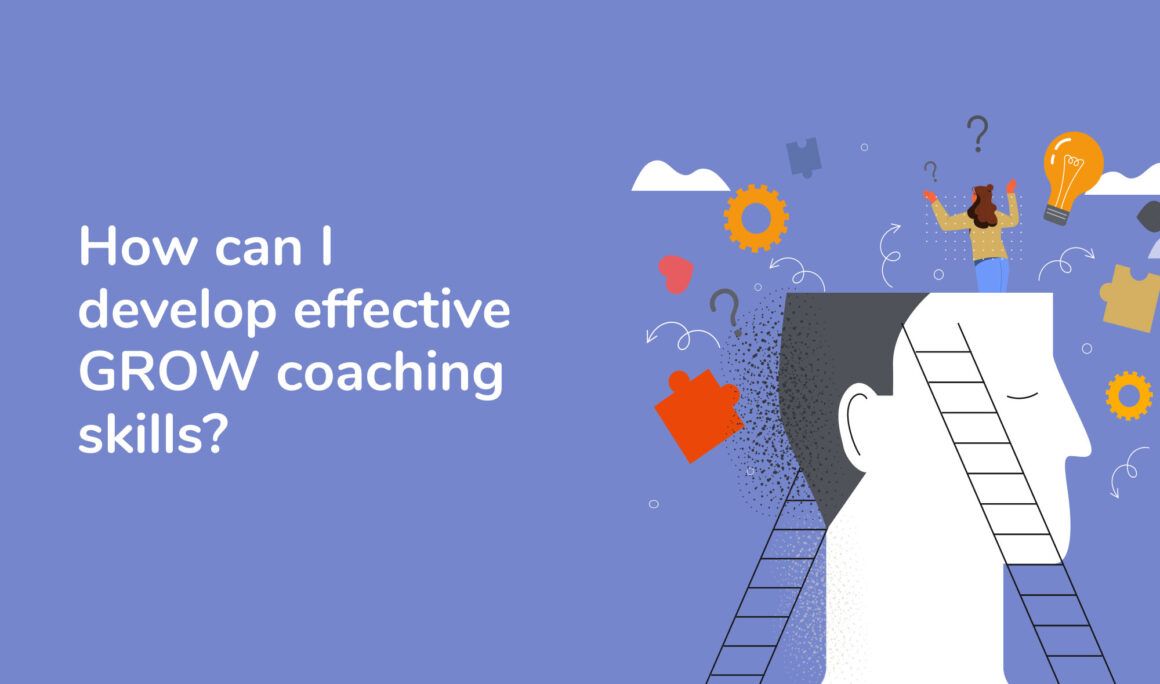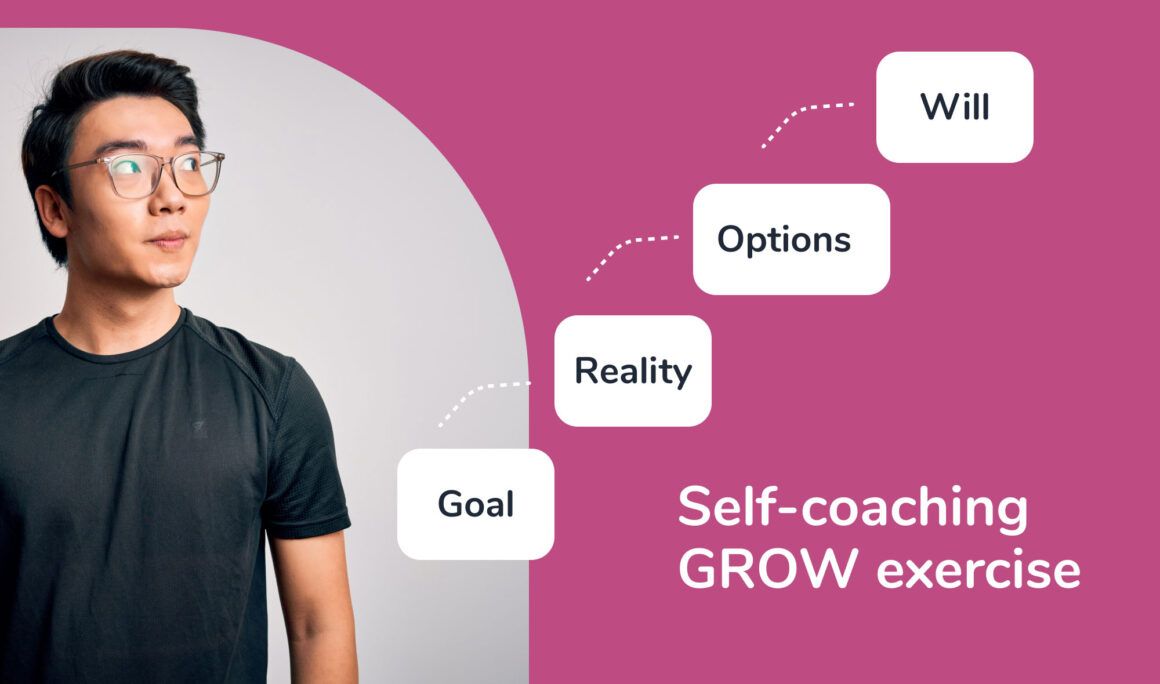The GROW model: practical coaching driven by a powerful philosophy
By Julian Lewis • January 30, 2023

The GROW Model is a powerful coaching framework that helps individuals and teams set clear goals, identify challenges, and develop actionable plans for achieving those goals. It is based on the philosophy that by focusing on the present and the future, rather than the past, we can empower individuals to take control of their own development and growth.
In this blog, we will explore the key elements of the GROW Model and how you can use it to drive practical and effective coaching sessions with your team. We'll also share real-world examples and tips for making the most of this powerful tool. Whether you're a seasoned coach or just starting out, we hope you find this blog helpful in developing your coaching mindset and helping others grow and succeed.
Join our Newsletter
Transform your career with our personal growth insights. Get one valuable tip right in your inbox every Saturday morning.
Introduction to the GROW model

The GROW coaching model is a framework for guiding a tough conversation or coaching session. It is designed to help coaches and their clients identify goals, assess the current reality, generate options for moving forward, and establish a plan for taking action. The four key stages of the GROW coaching model are as follows:
The four key stages
Goal
The first step in the GROW coaching model is to identify the goal or outcome that the client is seeking to achieve. This might be a specific, measurable, achievable, relevant, and time-bound (SMART) goal, or it might be a more general sense of direction or purpose. The goal should be clear and specific enough to allow the coach and client to work towards it effectively.
Reality
The second step in the GROW coaching model is to assess the current reality of the client. This includes identifying the client's strengths and weaknesses, as well as any obstacles or challenges that might be standing in the way of achieving the goal. By understanding the client's current reality, the coach can help the client to identify areas of improvement and develop strategies for overcoming any challenges.
Options
The third step in the GROW coaching model, also known as the options stage, is designed to generate options for moving forward. This might involve brainstorming ideas, exploring different approaches, or considering alternative solutions. The coach and client should aim to come up with a range of options that will help the client to achieve their goal.
Way Forward
The final step in the GROW coaching model is to establish a plan for taking action. This might involve setting specific, achievable tasks or milestones, as well as identifying any resources or support that might be needed to help the client achieve their goal. The coach and client should work together to develop a plan that is realistic and achievable, given the client's realistic situation and available resources.
Overall, the GROW coaching model is designed to help coaches and their clients work together to identify goals, assess the current reality, generate options for moving forward, and establish a plan for taking action. By following this structured approach, coaches and clients can work effectively together to achieve meaningful and lasting change.
For more in-depth knowledge and insights into the GROW model and other coaching methods, you may find it beneficial to explore some of the top recommended coaching books.
Who created the GROW model?

The GROW Model was developed in the 1980s by coaches Sir John Whitmore, Graham Alexander, and Alan Fine as a way to help individuals set and achieve their goals. They spent decades helping coaches inspire great performance, and the model was developed out of the authors' own experiences and their observations of the coaching process.
The impact of GROW coaching
GROW coaching has had a significant impact on the field of coaching and personal development. Since its inception in the 1980s, the GROW Model has become one of the most widely used and recognized coaching models in the world. It has been applied in a wide range of settings, including business, sports, education, and personal development, and has been used to help individuals and teams achieve their goals, overcome challenges, and make positive changes in their lives.
Join our Newsletter
Transform your career with our personal growth insights. Get one valuable tip right in your inbox every Saturday morning.
The popularity of the GROW Model can be attributed to its practicality and effectiveness. The model is designed to be flexible and adaptable, so it can be customized to fit the needs and goals of each individual or team. It is based on the idea that every individual has the potential to grow and improve, and that the role of the coach is to help the individual or team identify their goals, assess their present reality, explore potential options, and take action to achieve those goals.
The impact of GROW coaching extends beyond the individual or team being coached. The skills and strategies learned through the GROW Model can be applied in other areas of life, leading to a ripple effect of personal and professional growth. Additionally, the use of the GROW Model has contributed to the overall growth and development of the coaching industry, helping to establish coaching as a respected and effective profession.
6 examples of the GROW coaching model

The GROW Model has become one of the most popular and widely used coaching models in the world. It is used by many performance consultants and executive coaches alike in a variety of settings, including business, sports, education, and personal development. The model is particularly useful for helping individuals identify and achieve their goals, overcome challenges, and make positive changes in their lives.
Let's dive into some examples of how the GROW method can be applied both at home and in the workplace:
Individuals
Let's say that the individual's goal is to lose weight and improve their overall health. The coach could use the GROW model as follows:
Goal: The coach would help the individual clarify their goal of losing weight and improving their health. They might ask questions such as: "What specifically do you want to achieve?", "Why is this goal important to you?", and "What will achieving this goal allows you to do or have that you don't currently have or do?"
Reality: The coach would help the individual assess their current reality, including their current diet and exercise habits, any challenges or obstacles they are facing, and their current level of motivation. They might ask questions such as: "What are you currently doing to try to lose weight?", "What has been working for you and what hasn't?", and "What has been holding you back from achieving your goal?"
Options: The coach would help the individual explore a range of options for achieving their goal. They might ask questions such as: "What different approaches could you take to losing weight?", "What resources or support could you access to help you reach your goal?", and "What are the pros and cons of each option?"
Will: The coach would help the individual commit to a plan of action and develop the motivation and confidence needed to follow through on their goal. They might ask questions such as: "What specifically are you going to do to achieve your goal?", "How will you stay motivated and accountable?", and "What support do you need to stay on track?"
Throughout this process, the coach would use a variety of performance coaching techniques and strategies, such as active listening, questioning, and goal-setting, to help the individual clarify their goals, assess their reality, explore their options, and take action.

Group or team
One of the defining characteristics of a winning team is the ability to align themselves to a common goal. By using the GROW coaching style, a coach can help a team identify what their goal is for creating synergy within the group, assess their current situation in terms of interpersonal dynamics and relationships, explore different options for increasing collaboration and communication, and create an action plan to move forward.
Management/organizations
Another area where the GROW framework can be applied is in the workplace. We at Zella have actually successfully implemented it across multiple layers of large organization, from top executives, middle managers and diverse talent. For example, if a manager is developing a strategy for launching a new product or service, a business coach can help the team identify what their goal is for the launch, assess the reality of their current situation in terms of resources, customer base, and market, explore the options they have available to them for the launch, and come up with an action plan to move forward.
If you're interested in understanding the role of middle managers, and how they fit into organizational dynamics, you may find our in-depth article on the subject insightful. Explore it here: Demystifying the Middle Manager.
Parenting and teaching students
Did you know that this powerful coaching philosophy can even be applied to your kids? For example, a parent can help their children or whole family identify what their goal is for improving communication, assess their current situation in terms of how information is shared and received, explore different options for increasing understanding between family members, and create an action plan to move forward. Many teachers have also seen success after using this coaching tool with their students, not just with performance improvement but also with self-motivation and problem-solving skills. Learn to navigate anxiety at work.
How can I develop effective GROW coaching skills?

To develop effective GROW coaching skills, it is important to:
Be clear and specific about the goal or outcome that the client is seeking to achieve
This means helping the client clarify their goals and ensuring that they are specific, measurable, achievable, relevant, and time-bound (SMART). It is important to take the time to fully understand what the client wants to accomplish. This may involve asking questions, listening actively, and clarifying any misunderstandings.
Assessing the current reality of the client in a thorough and honest way
This means helping the client identify their current challenges, successes, and resources, and being honest about any obstacles or limitations they may face. Not only should you consider the quantitative measures, but also the qualitative measures that can provide more insights. And also, be sensitive to cultural and individual differences that might impact how a client perceives their reality.
It's also important for the professional to communicate their findings to the client in a way that is clear, honest, and non-judgmental. The client should be an active participant in the assessment process and be given the opportunity to ask questions and provide feedback. This open and honest dialogue will help to build trust and ensure that the client feels heard and understood.
Generating a range of options for moving forward, including both conventional and creative ideas
This means helping the client explore a range of options for achieving their goals, including both traditional and more innovative approaches. Encourage them to think creatively and consider options they may not have initially considered.
Conventional ideas refer to those that are based on established norms, practices, or conventions. They tend to be rooted in past experiences or existing knowledge and are often seen as safe and reliable. These ideas are often tried and true, meaning they have been used and tested in the past and have proven to be effective. They tend to be more logical and straightforward and are often used to improve existing systems or solve problems in a predictable and efficient way.
On the other hand, creative ideas are those that are new, original, and often unexpected. They tend to be more open-ended and less constrained by existing norms or knowledge. Creative ideas often challenge the status quo and can lead to new and innovative solutions. They tend to be more free-form and can come from unexpected sources. They require a different way of thinking, and it is not always easy to predict the outcomes.
Establishing a plan for taking action that is realistic and achievable, given the client's current reality and available resources
This means helping the client develop a specific and actionable plan for achieving their goals, taking into account their current reality and the resources and support they have available to them. Be sure to include a realistic time frame, as unrealistic expectations can drastically impact other stages of the process.
Being open and flexible, and being willing to adjust the plan as needed based on the client's progress and feedback
This means being open to adjusting the plan as needed based on the client's progress and feedback, and being willing to explore new options if the original plan is not producing the desired change. This process should be an outcome-focused one, so if something isn't working, think through a few other ideas and move forward with the next option until a real difference in results is observed.
Self-coaching GROW exercise

The GROW model can also be extremely effective outside of a business setting. Whether you are looking to gain new skills, overcome internal and external obstacles, or inspire great performance from others, self-coaching is the best place to start. Here is a self-coaching GROW exercise you can try to tap into your own potential:
- Goal: Identify a specific goal that you want to achieve. Make sure it is a SMART goal (specific, measurable, achievable, relevant, and time-bound).
- Reality: Assess your present reality in relation to your goal. This might include identifying your current challenges and successes, as well as the resources and support you have available to you.
- Options: Brainstorm a range of options for achieving your goal. These might include traditional and more innovative approaches. Consider the pros and cons of each option.
- Will: In this final stage, choose one or more options to pursue and develop a plan of action. This should include setting specific, measurable, achievable, relevant, and time-bound (SMART) goals and identifying who is responsible for each task.
Throughout this exercise, be sure to ask yourself open-ended questions and allow yourself time to reflect on your answers. You might also want to consider using visual aids, such as a mind map or flowchart, to help you brainstorm and organize your ideas.
This exercise can be done on your own or with the support of a coach or mentor. It can be done in a single coaching session or broken up into multiple coaching sessions, depending on the complexity of your goal and the time available.
FAQs on the GROW model

If you are new to the GROW model, you may have some questions about how it works. Let's take a look at some of the most common questions:
How is the GROW Model different from other coaching models?
The GROW Model is a popular and widely recognized coaching model. It is based on the idea that every individual has the potential to grow and improve, and that the role of the coach is to help the client identify their goals, assess their current reality, explore potential options, and take action to achieve those goals. It is a flexible and adaptable model that can be customized to fit the needs and goals of each individual or team.
What are some potential limitations of the GROW model?
One potential limitation of the GROW model is that it may not be appropriate for all situations or clients. For example, some clients may have complex or multifaceted goals that may not fit neatly into the four stages of the GROW model.
In addition, the GROW model may not be well-suited for clients who are resistant to change or who are not fully committed to achieving their goals. Finally, the GROW model is a structured approach that may not be well-suited for more open-ended or exploratory coaching conversations.
How can I learn more about the GROW Model?
There are many resources available for learning more about the GROW Model. You can read books, articles, and blogs on the subject, and consider taking a course or training program that focuses on the GROW Model. You can also join a professional coaching organization, sign up for special coaching events in your area, or seek the guidance of a mentor or coach who is experienced in using the GROW Model.
Conclusion
There's a reason the GROW Model has become the most popular coaching model globally; it is a practical and effective coaching method that is driven by a powerful philosophy of personal growth and development. It has been widely used and recognized in the coaching industry and has helped countless individuals and teams set and achieve their goals, overcome challenges, and make positive changes in their lives.
The model is based on the idea that every individual has the potential to grow and improve, and that the role of the coach is to help the client identify their goals, assess their present reality, explore options, and take action to achieve those goals.
If you are a coach or aspiring coach, we encourage you to learn more about the GROW Model and consider incorporating it into your practice. The GROW Model has the power to transform the lives of your clients and help them reach their full potential.
Explore self-reflection questions to deepen your coaching practice.
If your leadership skills could use some improvement, it may be wise to consider signing up for executive coaching. Explore 30 of the best leadership coaching quotes of all time and understand their hidden messages.
Additionally, if you're interested in exploring the benefits of 360-degree feedback in executive coaching, we recommend reading our post on Executive Coaching: 360-Degree Feedback.
You can also explore the benefits of mindful leadership coaching in our related blog post on mindful leadership coaching.

Read more about: Executive Coaching
About Julian Lewis
Julian Lewis is a driven and accomplished professional with a passion for driving positive change in the business world. He is the co-founder and COO at Zella Life.
His own experience as a professional of color in a Fortune 500 company led him to discover the limitations for advancement that many professionals like himself face. Determined to reach his full potential, Julian became an established business coach and entrepreneur, committed to supporting others in their pursuit of personal and professional growth.
Today, Julian is a recognized corporate trainer, coach, and leader, known for his ability to leverage real-life experiences and evidence-based methodologies to affect positive change within individuals and organizations. As the leader of Zella Life's coaching division, he is dedicated to empowering individuals and businesses to achieve their full potential.